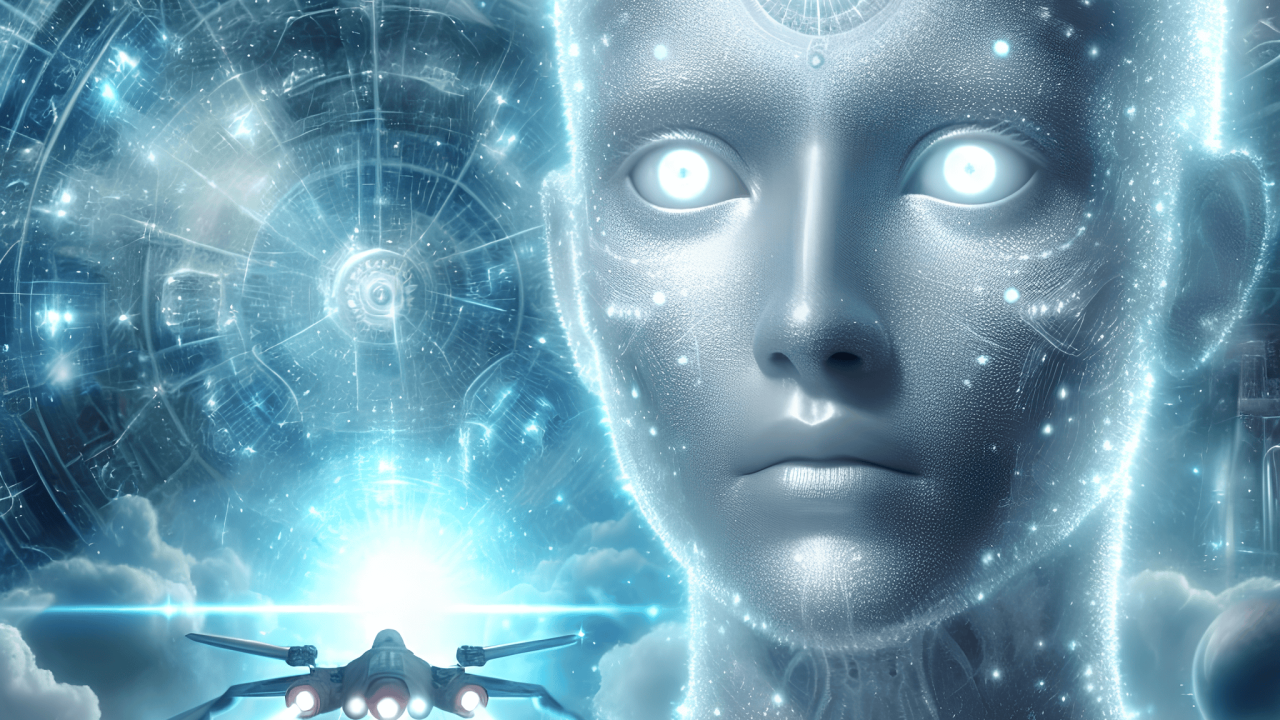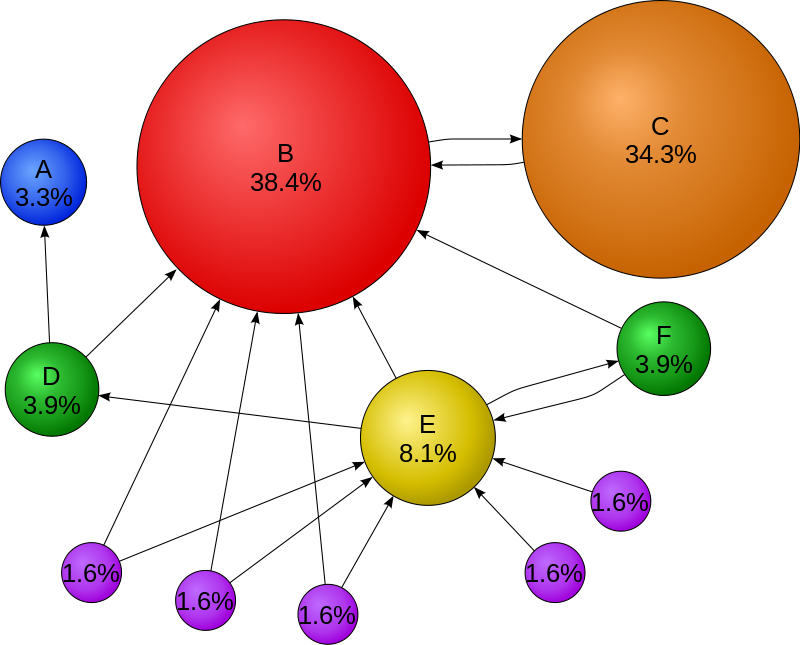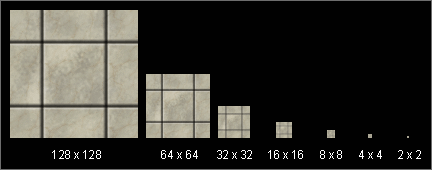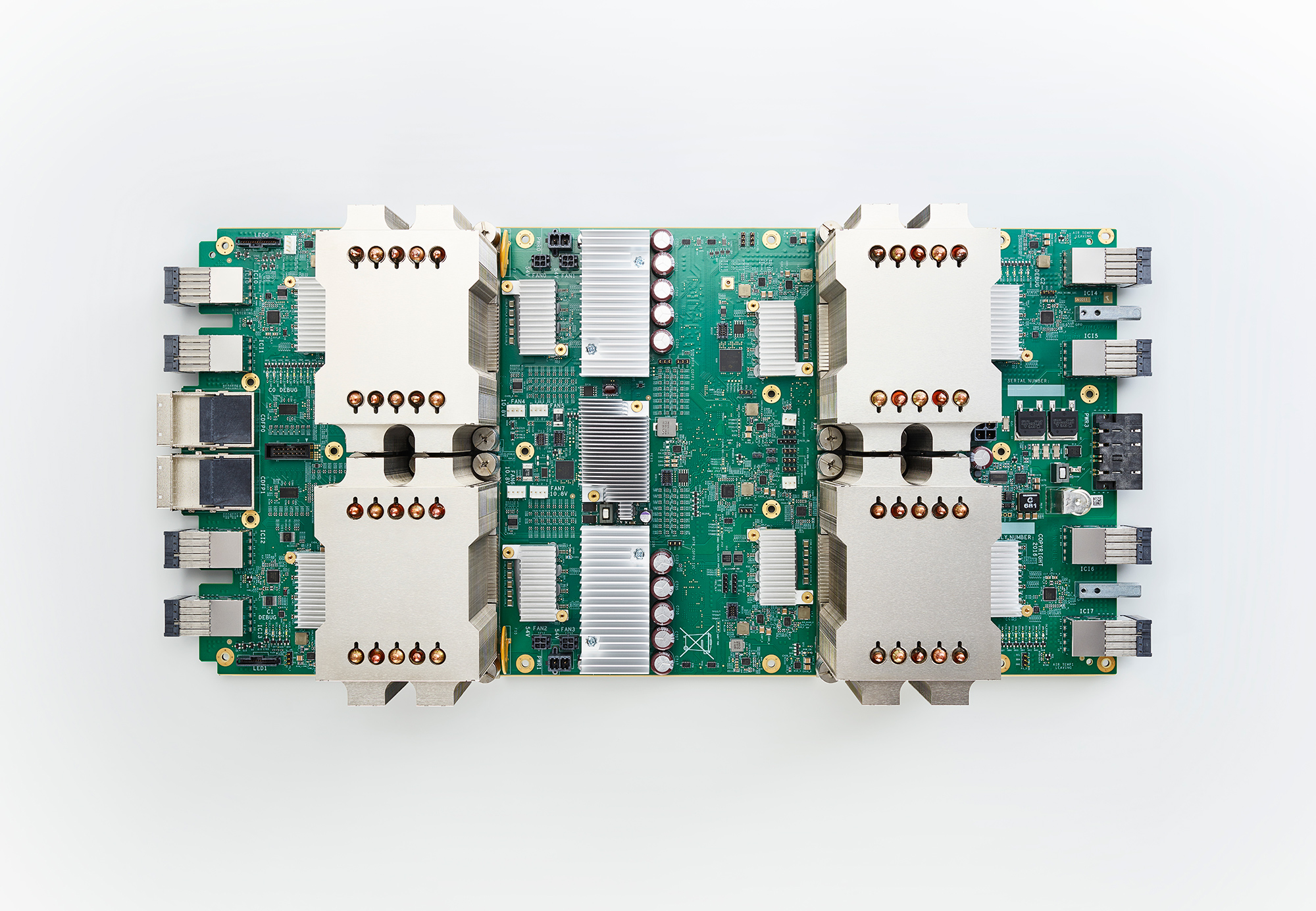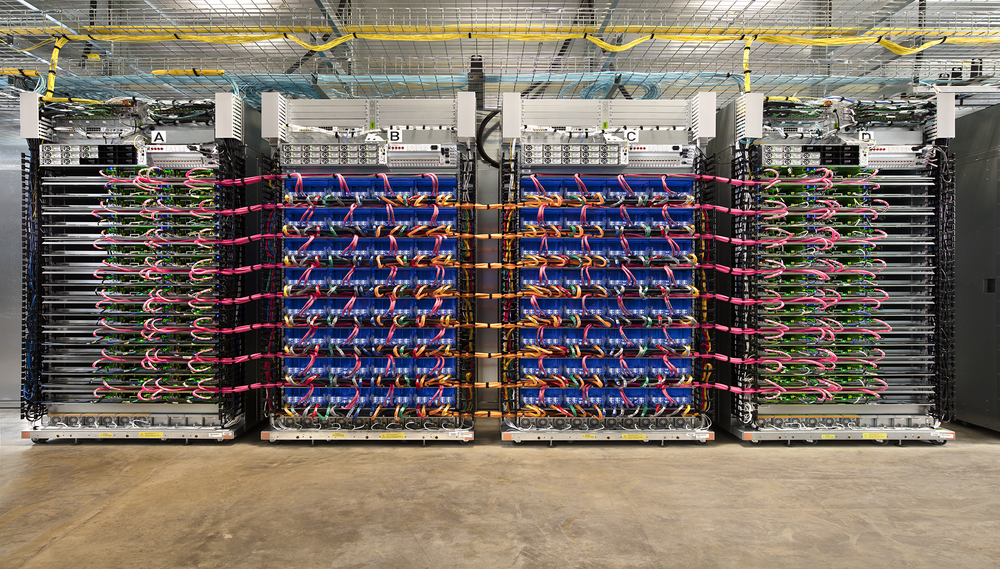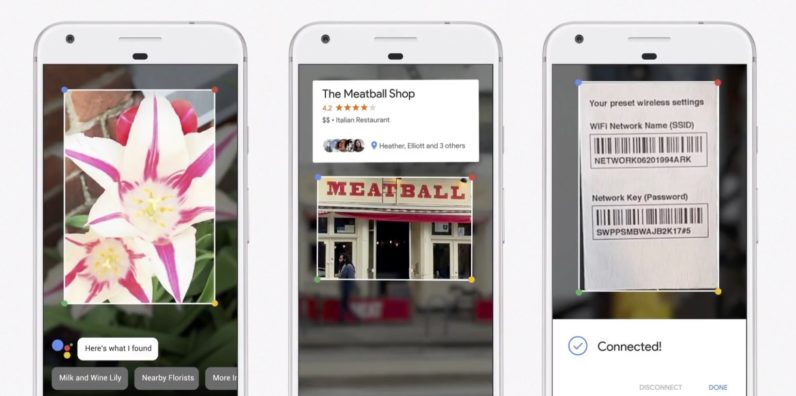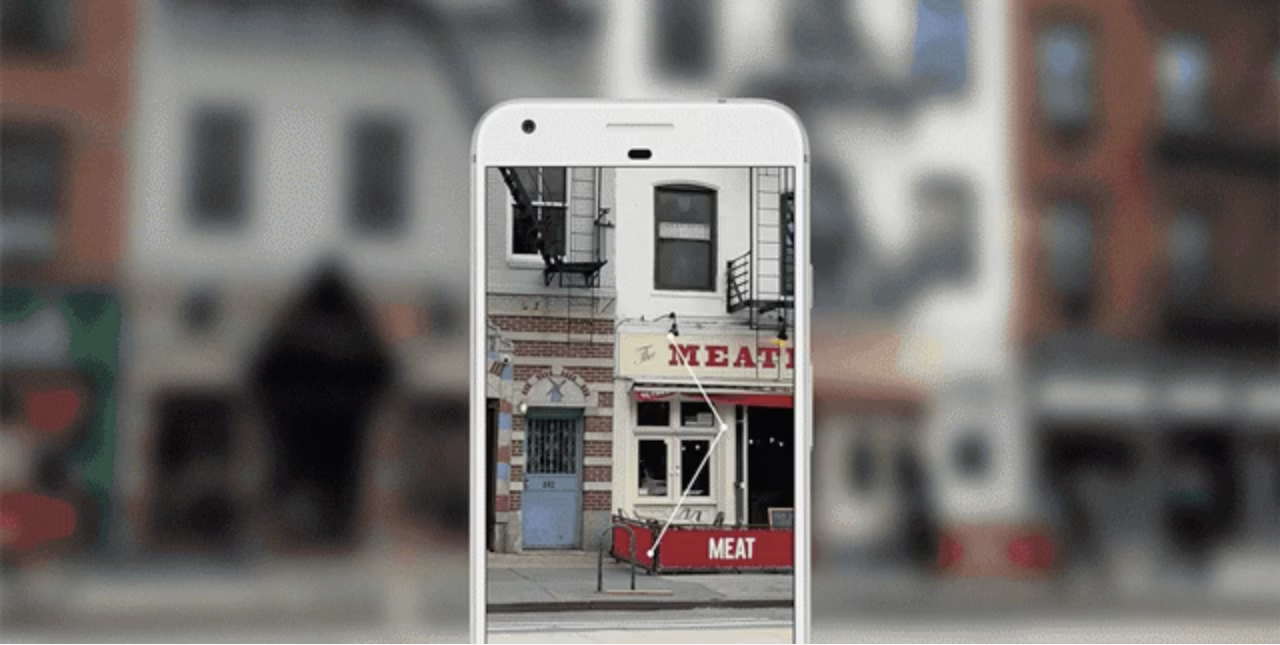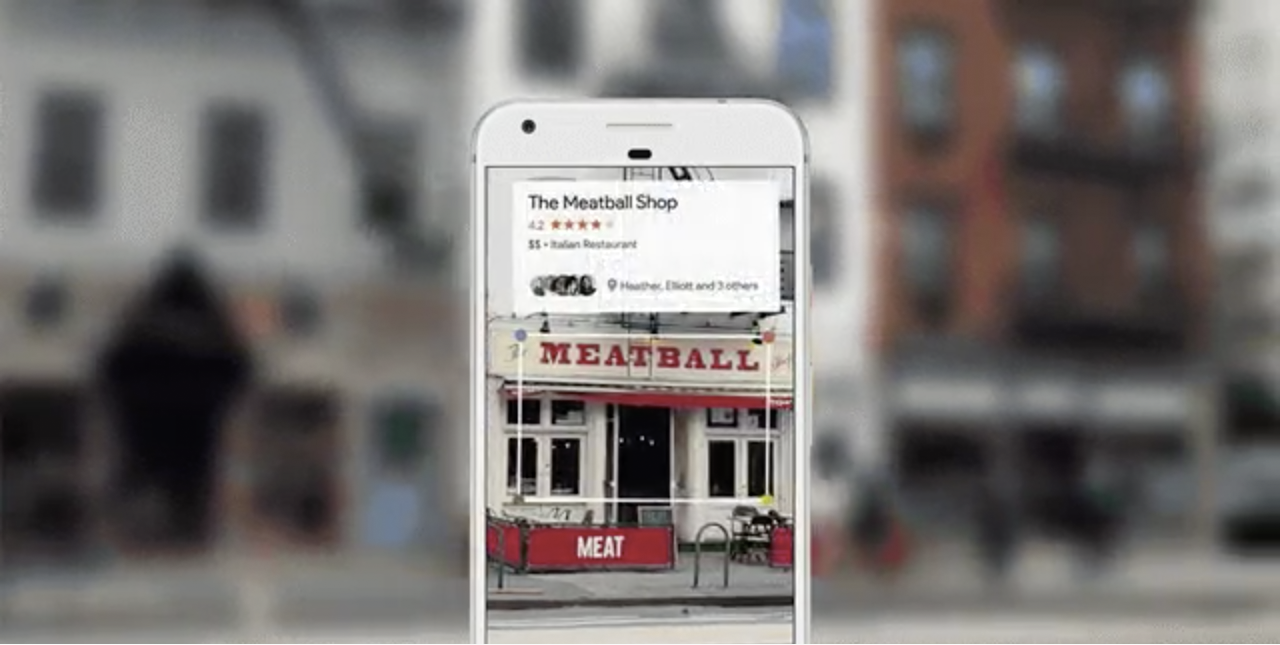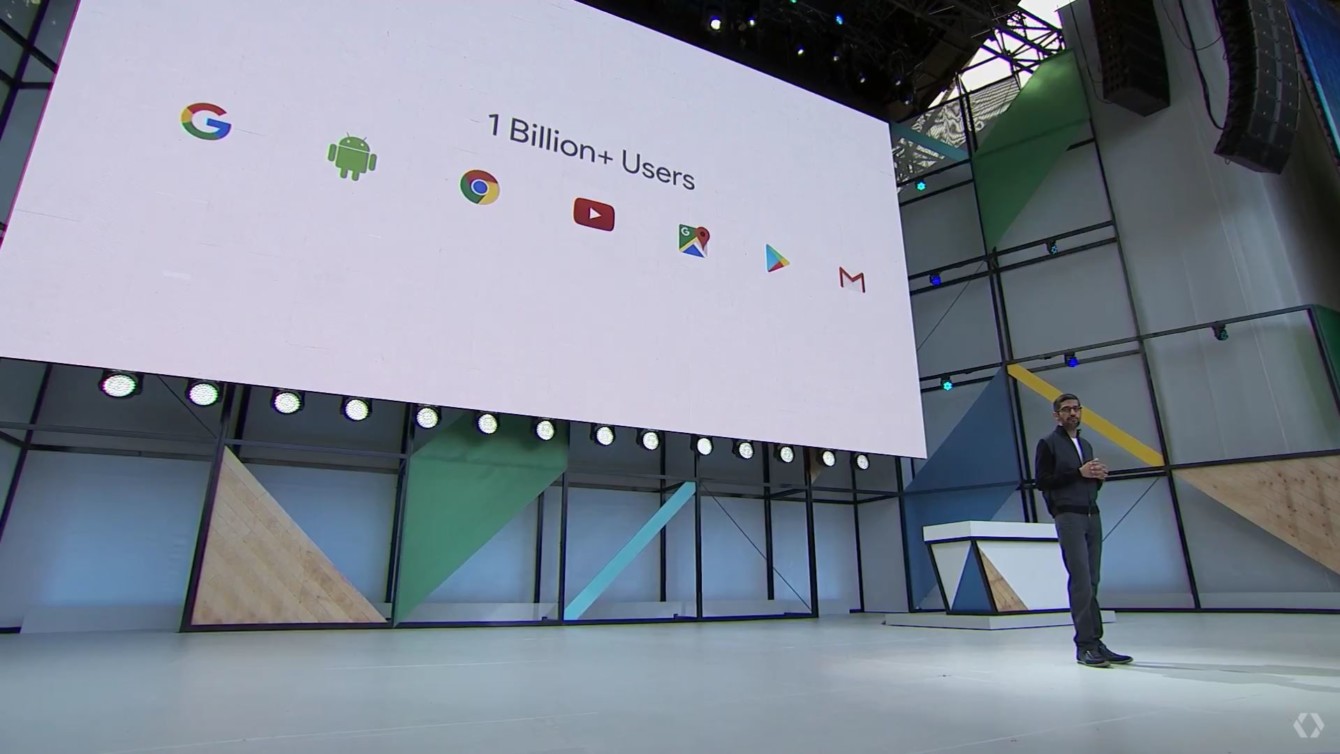Monday, September 1, 2025
Man always fears what he doesn't understand.
- In the ~1920's it was robots,
- In the ~1950's it was aliens,
- In the ~2020's it is A.I.
These fears are/were based on ignorance and anthropomorphization.
Movies are a "litmus test" of the consciousness of the mass populace aka collective consciousness. By the 2000's we had seen movies and mediums showing the other, positive side of robots and aliens. Popular examples include:
- Superman (1938), Mork from Mork and Mindy (1978), E.T. (1982) were friendly aliens,
- R2-D2 from Star Wars (1977) and WALL-E (2008) were friendly robots.
There are of course lots of examples, some more popular, some less popular:
- For robots earlier works include Gakutensoku (1928), Isaac Asimov's Robbie (1940), B9 Robot from Lost in Space (1965).
- Other friendly aliens include: The Day The Earth Stood Still (1951), Encounters of the Third Kind (1977), Arrival (2016).
First, we need to define some terms:
- A.I. -- Artificial Ignorance (commonly MISLABELED as Artificial Intelligence)
- a.i. -- Actual Intelligence
- α.i. -- Alien Intelligence
Today's tech companies are jumping on the A.I. bandwagon faster then the Crypto bros say "Trust me bro!" when pumping the latest shitcoin. This is due to:
- The fines for piracy are considerable less than the shareholder value, and
- It is easy to automate "training".
See GamersNexus video "Piracy is for Trillion Dollar Companies | Fair Use, Copyright Law, & Meta AI" -- https://www.youtube.com/watch?v=sdtBgB7iS8c -- but we are getting ahead of ourselves.
There are multiple problems with the current Artificial Ignorance fad.
In a lot of ways it reminds me when photography took off. Charles Baudelaire in “Le Public Moderne et la Photographie” (The Modern Public and Photography) whining about "... has become art's most mortal enemy, ..." is the perfect example of archaic gate-keepers refusing to embrace the new medium. Ditto for HDR photography. Gee, history repeats itself. Who knew!
Ignoring the common issues of AI "slop", bias, privacy, Intellectual "Property" concerns for the input and output, lack of accountability, lack of transparency, etc., the other issues people don't normally talk about are:
-
A.I. has ZERO understanding, it is a gloried table lookup that predicts the next token. Manipulating tokens is NOT sufficient for intelligence. See Stephan Wolfram's excellent "What Is ChatGPT Doing … and Why Does It Work?" article from 2023 -- https://writings.stephenwolfram.com/2023/02/what-is-chatgpt-doing-and-why-does-it-work/
-
It has no context. This is how you get nonsense like a person ordering "a large Mountain Dew" and the AI voice loops with "and what will you drink with that?" -- https://www.bbc.com/news/articles/ckgyk2p55g8o
-
Good-luck debugging the code it spews out!
-
Science -- by definition -- is amoral. How do you "encode" morality into A.I.?
LLMs (Large Language Models) are built upon a model of how we "think" the brain works. One of the problems with this model is that thought is non-local in the brain. You can research the problem of "non-local consciousness" if you want to go down this rabbit hole.
People will also say "AI bad!" but the reality is A.I. is JUST another tool. It is the COMPANIES MISUSING AI that is the problem, NOT the tool itself. Take for example CGTrader -- a popular marketplace website where artists can upload digital 3D Models. If you read the "General Terms and Conditions" you find this disgusting clause:
18.5. For any Product/Content uploaded to the Site or otherwise submitted to CGTrader, the Seller grants and represents that he has the authority to grant to CGTrader a non-exclusive, worldwide, royalty-free, license in any medium now known or hereinafter invented to:
- use the Products for machine learning or training of neural network models, including generative AI, for the purposes of researching, creating, developing and testing new CGTrader's tools, features, services or technologies, which may be developed by CGTrader or with the help of its subcontractors or partners, unless the Seller opted out by licensing the Product offered for purchase under the licenses marked with “No AI”, while CGTrader shall always retain this license for Products offered as free download.
If you offer a product as a free download CGTrader ALWAYS retains the right to use for training of AI?!?!
Thankfully A.I. is doomed to fail to reach AGI (Artificial General Intelligence) due to it being built upon an incomplete and faulty foundation.
A reductive materialist approach will NEVER bridge the gap with the flawed assumption that you "need a brain for thought" due to the fact that Modern Scientists are ignorant of Life after Death. You can't "add" intelligence or consciousness as a magical "emergent behavior" -- you need to START with it.
I.e. Bio-organic Computing.
How do we know this?
Consciousness IS the underlying foundation of reality; it is how we get The Placebo Effect. The greatest discovery of Science -- PROOF of Mind over Matter -- and it is basically ignored! See "13 things that do not make sense" for how truly BIZARRE the Placebo Effect can get -- https://www.newscientist.com/article/mg18524911-600-13-things-that-do-not-make-sense/
Don’t try this at home. Several times a day, for several days, you induce pain in someone. You control the pain with morphine until the final day of the experiment, when you replace the morphine with saline solution. Guess what? The saline takes the pain away.
This is the placebo effect: somehow, sometimes, a whole lot of nothing can be very powerful. Except it’s not quite nothing. When Fabrizio Benedetti of the University of Turin in Italy carried out the above experiment, he added a final twist by adding naloxone, a drug that blocks the effects of morphine, to the saline. The shocking result? The pain-relieving power of saline solution disappeared.
Eventually Bio-organic computer will (re)discover Silicon Consciousness. This is a.i. or Actual Intelligence. It does NOT have the same behaviors as humans so projecting fear such as it "a.i. will take over the world!" is just that -- a projection based on inexperience.
Our questions and definition of:
- "What is intelligence?"
- "What is consciousness?"
... will be forced to expand with this discovery. (One of the current fundamental problems in Science is that there is NO test for Consciousness so you can't "prove" something is conscious.)
Likewise, by 2050 it will be common knowledge that we are not alone. Scientists will again be forced to expand their definition of intelligence to include α.i. -- Alien Intelligence. All the atheists should pay attention at this point: "If Religion is a 'man-made' institution then WHY do SO many (advanced) aliens ALSO have Religion?"
The answer:
Religion is kindergarten Spirituality.
That is:
- Religion is one person telling another what they SHOULD do to understand the Divine,
- Spirituality is one person telling another what they COULD do to understand the Divine.
But I digress.
All the fear-mongering about:
- "AI will enslave us all!" is completely FALSE,
- "Companies are abusing AI!" is indeed TRUE.
We need to be mature and separate the fear and hype from the reality.
Like any advancement in technology, ultimately we need to get over the fear and move on with our lives.
- a.i. exists. So what now?
- α.i. exists. So what now?
Indeed, what now?
What are the pros of AI? What are the cons of AI? How are companies abusing copyright? What protections could art have? What protections should art have? Where should the boundaries of AI be? What does this mean for a country, company, culture, or us as a species?
Image by VideoMaker44 from https://pixnio.com/media/illustration-graphic-humanoid-alien-artificial-intelligence
Friday, May 19, 2017
"Dear Microsoft, You are about to get completely screwed over and you don't even realize it."
In Google's I/O 2017 keynote and other talks you may have noticed that Google has literally been hyping the hell out of:
- ML (Machine Learning),
- TPU's (Tensor Processing Unit), and
- TensorFlow (open source machine learning architecture and APIs).
Google quickly rose to fame in ~1999 because "web searching" SUCKED. You would get so many false positive and irrelevant links from a single search engine that you had to use a "meta search" engine that:
- "crawled" a NUMBER of web searching sites and
- would curate the links in common.
Popular meta-crawlers back in the day were AltaVista, AskGeeves, DogPile, Lycos, WebCrawler, etc.
- https://en.wikipedia.org/wiki/AltaVista
- When did Google become the be-all, end-all of search engines?
What Google brought to the table was PageRank -- a (web) page was relevant NOT only by the content on it, but ALSO what LINKED to it.
This was a game changer.
(Perceived) Popularity of Truth was now more important the actual content! It didn't matter if you what said was correct if no one believed it (linked to it.) If you had some crappy inaccurate website, but everyone linked to it, maybe indirectly via cheesy "WebRings", you were getting the "traffic" and others weren't.
Google started selling AdSense and AdWords. Companies sprung up overnight selling SEO (Search Engine Optimizations) -- guaranteeing that your company would rank higher via the right keywords. Everyone ELSE was doing "Paid Inclusion" -- companies could literally "buy" their way to the top of the search results -- and people hated it since it wouldn't return relevant results like Google did.
- https://en.wikipedia.org/wiki/AdSense
- https://en.wikipedia.org/wiki/AdWords
- https://en.wikipedia.org/wiki/Paid_inclusion
Other companies started "focusing" on becoming a "Web Portal". The justification was that: "If people are here for search they will want other things as well."
Except, NO, I don't want/need all your other crap -- I just want the results of my search.
This is a timeline of how Yahoo jumped the shark while Google remained focused on just 1 thing, Accurate Search Results:
Source: https://blog.codinghorror.com/content/images/2014/May/05_yahoogle.png
Google's popularity exploded almost the day it came online and by 2000 had all but sealed the deal. Gee, accurate search results go figure. We'll come back to this point.
Due to the sheer expansion of the web --- there is a TON of data -- Google started running into a problem. How the hell do we:
- crawl the "net" for results?
- save this data?
- query the data that a user wants & provide results in near real-time?
Google solved these problems with a number of technologies:
- MapReduce
- BigTable
- Dremel using low-latency SQL and NoSQL
You can read more details here:
Having "mastered" text searching Google went onto to indexing Pictures and Video -- but we didn't know it at the time as they were quiet for almost a decade.
Every now and then we'd hear rumors about Google being anal retentive over power usage.
In 2009 we finally got the answer. They had been building servers with their OWN DC power!
Google's big surprise: each server has its own 12-volt battery to supply power if there's a problem with the main source of electricity. The company also revealed for the first time that since 2005, its data centers have been composed of standard shipping containers -- each with 1,160 servers and a power consumption that can reach 250 kilowatts.
But why had Google been going completely crazy over power efficiency?
We know that the indexing the web (and servicing requests) takes up a TON of (disk and memory) space when you have millions of people performing search.
If Google could cut the costs of electricity PER server that would add up. Exactly how many serves does Google have?? In 2011, it was estimated they had 900,000 servers!
But new data on Google's energy use suggests that the company is probably running about 900,000 servers.
Google never says how many servers are running in its data centers. The new estimate is based on information the company shared with Stanford professor Jonathan Koomey, who has just released an updated report on data center energy usage.
"Google's data center electricity use is about 0.01% of total worldwide electricity use and less than 1 percent of global data center electricity use in 2010,"
WHOA.
No wonder they were kicking the crap out of other search engines -- the others guys had a HUGE electric bill right from the get go !!
In the vernacular: Google was able to SCALE in both Hardware and Software.
So they have a TON of storage, a TON of horsepower, but what does that have to do with searching Pictures, Video, and Speech?
All that horsepower was INSUFFICIENT.
WHAT?!
Machine Learning is the latest buzzword that means multi-dimensional dynamic-data-storage and static-data-lookup.
Here is an example:
Let's say we want a computer to identity a picture.
First thing to do is to generate "mip-maps":
Source: https://www.gamedev.net/uploads/monthly_06_2011/ccs-8549-0-46062900-1308172686.gif
Here is a very simplified description:
We keep scaling a picture smaller and smaller until we reach some threshold, say 32x32, and analzyze that,
OR
we analyzing these 32x32 partial-images.
In either case we store "weights", or a normalized number between 0.0 and 1.0 for every "feature" it has.
All these weights are like a "digital" fingerprint. But instead of an single digital number like an 64-bit int, we have a "fuzzy" 32x32x3 (width x height x 3 channels red/green/blue) = 3,072 weights.
Here is an animated picture of how it works:
Source: https://giphy.com/gifs/3oEduSJjAm3B34j4EU/
You can read the gory details about convolution neural nets here:
Google has a write-up about identifying 32x32 images.
We basically need to feed it a TON of images -- this is the training process.
In 2015 a many-layered CNN demonstrated the ability to spot faces from a wide range of angles, including upside down, even when partially occluded with competitive performance. The network trained on a database of 200,000 images that included faces at various angles and orientations and a further 20 million images without faces. They used batches of 128 images over 50,000 iterations.
Why ALL that training?
- Too FEW data and you have false positives or Under-fitting.
- Too MUCH (irrelevant) data and you have potentially run into Over-fitting
What does recognizing Pictures, Video, and Speech all have in common?
This training process is ALL number crunching.
Gee, if only we had a dedicated device that was specifically built for parallel floating-point operations.
Oh wait, what's that GPU thing I keep hearing about?
In 2005 GPU's started being used for "Machine Learning." https://www.computer.org/csdl/proceedings/icdar/2005/2420/00/24201115-abs.html
GPU's contained to get faster and faster -- but they were also, ironically, TOO general purpose! At the end of the day you need the right bits in the right space at the right time -- you don't need the FULL operations of the GPU.
ASICs (Application-specific integrated circuits) to the rescue! ASIC is just another word for specialized hardware.
By cutting out all the extra stuff you don't need you can build minimal circuits dedicated to solving just the ONE (or few) problem that you do need -- this is EXTREMELY efficient and low power.
https://en.wikipedia.org/wiki/Tensor_processing_unit
Tensor processing units (or TPUs) are application-specific integrated circuits (ASICs) developed specifically for machine learning. Compared to graphics processing units, they are designed explicitly for a higher volume of reduced precision computation (e.g. as little as 8-bit precision) with higher IOPS per watt, and lack hardware for rasterisation/texture mapping.
You'll notice that the BitCoin "miners" went through the same migration path a few years back as well: CPU -> GPU -> ASIC. No one uses CPU's for BitCoin mining because searching/generating the (Mega or Kilo) hashes/second is S-L-O-W compared to ASICs.
Getting back to Google's hardware.
One of these little guys ...
Source: https://storage.googleapis.com/gweb-uniblog-publish-prod/images/tpu-V2-hero.width-2000.png
... is powering this:
Source: http://cdn.wccftech.com/wp-content/uploads/2017/05/tpu-v2-1.width-1000.png
This is what Google is saying about their 2nd generation TPUs:
https://www.blog.google/topics/google-cloud/google-cloud-offer-tpus-machine-learning/
Each of these new TPU devices delivers up to 180 teraflops of floating-point performance.
One of our new large-scale translation models used to take a full day to train on 32 of the best commercially-available GPUs—now it trains to the same accuracy in an afternoon using just one eighth of a TPU pod.
180 teraflops EACH!? WOW. That's a LOT of number crunching.
That partially answers the question of "What the hell does Google NEED with this amount of computing power???"
- Notice how Google started on the back end with textual search.
- They have made significant in roads with "Image Search"
- They have the map meta-information with Google Maps
- They have the visual road information with StreetView
- They have a front end with Android
- They can detect different speakers giving voice commands
- They are joining the front-end and back end when they demo "Google Lens" -- take a picture on your phone, and google will give the META information about it.
Now in order to LINK the visual information with the textual meta-information they need to first ... drum-roll ... RECOGNIZE the image!
The keynote demoed Google Lens @ 12:05 showing "The Meatball Shop":
Source: https://cdn3.tnwcdn.com/wp-content/blogs.dir/1/files/2017/05/Google-Lens-796x396.jpg
There is the animated version on twitter:
Source: https://twitter.com/google/status/864891667723300864
Here is a quick summary of how the image is recognized:
Google is solving several hard problems here leveraging their infrastructure:
- Upload the Real-Life (TM) image to their TPU Cloud -- they avoid the cost of physical network lines by leveraging ISPs (Internet Services Providers) existing internet infrastructure
- Recognize the image by querying what known images it matches -- It may already be in the system via Google StreetView or may be an entirely new image
- Classify what is IN the image -- it contains a business shop and sign
- If the user's Location Service is enabled on the device then send the GPS information to help query from Maps in order to narrow down the search space
- Retrieve the vendor's name, location, and other relevant info such as phone number, rating, etc.
- Associate the picture with textual information, and save this so the next query is faster for future queries
- Send the contextual information back to the user
To the end user it looks like "Magic."
I believe that:
Google wants end-to-end control all the way from the back-end to the front-end.
They don't care (as much) about the front-end (Web Browser, Mobile, or Tablet) since they have all the back end stuff you think you want / need.
In the Keynote @5:22 this picture of Sundar Pichai's keynote shows how Google's "World Domination" is coming along:
Source: http://cdn02.androidauthority.net/wp-content/uploads/2017/05/Google-IO-billion-users-1340x754.jpg
Let's "count" the "platforms" from left-to-right:
- Google (Search)
- Android (Mobile)
- Chrome (Web Browser)
- YouTube (Content Consumption)
- Maps (Resources)
- Pictures (Communication)
- Gmail (Communication)
Also notice how all of these are FREE. Google knows that people don't want pay anything for apps. This is Google's "end run around" Microsoft's control of the desktop. Google's sub-conscious thinking is along these lines:
"Screw you Microsoft -- we'll just re-route around your Windows ecosystem and control everything else."
This is just a modern paraphrasing of John's Gilmore quote:
- "The Net interprets censorship as damage and routes around it."
This is why I believe Microsoft is ultimately doomed.
When people say Bill Gates completely missed the Internet in 1995 -- that was the understatement of the CENTURY. Google is looking at the END game here. Microsoft doesn't even know the game was over before it started!
By providing "convenience" of all sorts of information Google is data-mining the hell out of you.
And guess what, people WILLINGLY give up any sense of privacy for convenience.
I believe Google is ultimately going after the "big prize" -- make it trivial to buy and get the information you "need" -- all the while Google has their fingers in ALL the pieces of the pie. From the hardware of Mobile and Wearables to services such as Lens and Wallet.
Think BIG picture here.
http://www.businessinsider.com/google-launches-hands-free-payments-in-some-restaurants-2016-3
Google wants you to be able to grab a slice of pizza without taking out your phone or wallet.
It is a capitalist's dream -- your "wearables" enable you to purchase anything conveniently.
It doesn't stop there.
When Google first got into autonomous cars a lot of people were sratching their heads asking "Huh! What? Why is a search company getting into the automotive industry? That makes no sense."
ML (Machine Learnign) is the "bridge."
This explains not only why but how Google is getting into autonomous cars. By having Google Maps they are able to leverage their back end services to get a foothold into the client in the car.
Picture this:
In a decade Google, or others, will have a self-driving car that you can buy -- powered by Android Auto of course -- that knows when and where you go to work (Google Contacts), when and were you come home, what your schedule is (Google Calendar), when and where you travel (Google Maps), how to control all the appliances in your house (Google Home), what you watch (YouTube), who your friends are (GMail), and what they look like (because you uploaded all your photos to their free Picasso, er, Google Photos), what your bank account information is (Google Wallet), what your fingerprints are, what your spending habits are, how to target specific ads to you (Google Chrome), is always listening to you (Google Assistant), knows how to reach your friends (Google Voice), has a record of everything you have said, what brands and types of clothes you wear, how often you buy them, when you sleep (Android Wear), how often you awake -- and that's just TODAY'S existing technology.
Someone just has to "connect the (meta) dots".
Hmmm, I don't know about you but being tracked to that deep level that creeps the hell out of me.
I'm not exactly sure if that is the kind of world I want to live in -- where a single company (*) has this much information over an individual.
(*) I'm NOT saying Apple is any better -- but so far they haven't played their hand like Google has.
Are there any laws to guarantee Google doesn't abuse this consolidation of information (power)?
I'm NOT saying technolog is bad -- technology _"just is" -- it be used or abused. The bigger issues are security and privacy. What happens not if but when Google gets "hacked"? How secure is this personal information? How do we know our personal information won't be used against us?
What does this have to do with Microsoft?
Microsoft seems to be completely clueless about winning the battle and losing the entire war -- except they are losing the battle too! They blew how many BILLIONS on buying Nokia again? 7.2 Billion plus ANOTHER ~billion ! And what do they have to show for it? Nothing!
https://www.theverge.com/2016/5/25/11766540/microsoft-nokia-acquisition-costs
Microsoft is taking another almost $1 billion hit on its failed Nokia acquisition today. The software maker is "streamlining" its smartphone business, writing off $950 million and cutting 1,850 jobs.
In contrast Google did 2 Billion Android devices in 6 years what Microsoft couldn't do in 20 years.
Ironically, with the backlash of Windows 10's spyware and forced upgrades, Microsoft is pushing people right into Google's hands.
If I was Microsoft right now I would be VERY, VERY worried about being made completely irrelevant in 20 years.
The handwriting is already on the wall -- back in 2015 not one single Windows machine made the Top 500 super-computer list.
https://en.wikipedia.org/wiki/TOP500
Since November 2015, no computer on the list runs Windows.
The sad part -- Microsoft doesn't even know what the hell they are doing! Already 33% of Azure runs Linux. While Microsoft is trying to cater to developers (You can run native Linux apps inside Windows 10 now they are so focused on a single tree that they have missed the entire forest being clearcut around them.
Of the major "computing" spaces *nix is winning big:
- Desktop
- Consoles (FreeBSD is used in Sony's PS3 & PS4 and Nintendo's Switch; Xbox One uses the Window's kernel obviously)
- Mobile (Android has 2 Billion devices powered by Linux.)
- Servers (66% powered by *nix)
- Supercomputers (100% powered by *nix)
It is going to be REAL interesting in the next decade as Microsoft scrambles to not miss the boat. Is it too late?
Time will tell.
You can leave feedback here
P.S.
NOTE: I have NOT read "The Google Story" so my time frame may be off but the overall gist should be accurate:
- Jason, Matthew, and Wayne for positive feedback.
